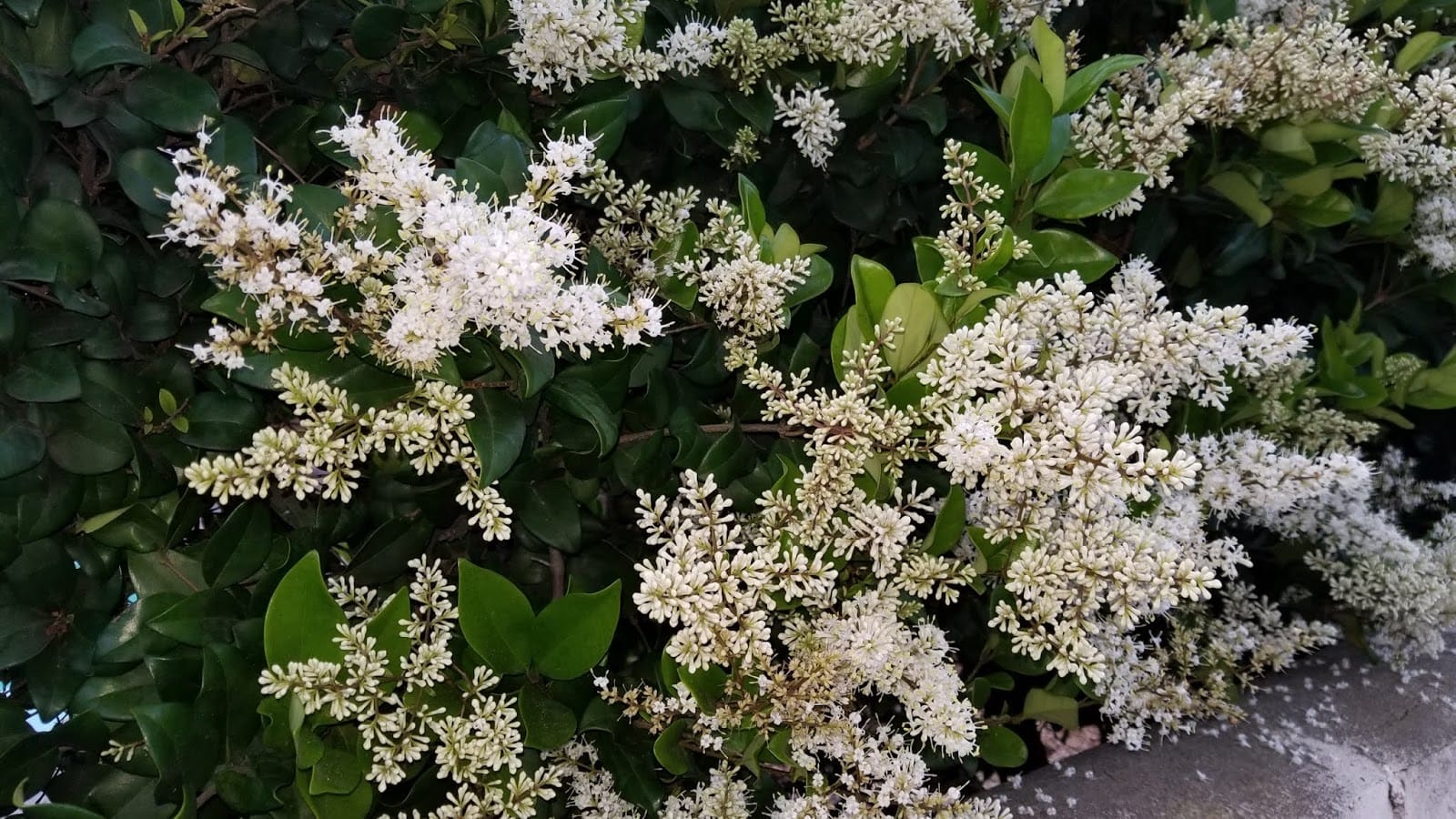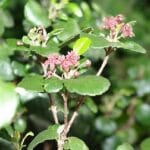Waxleaf privet (Ligustrum japonicum) is a popular evergreen shrub valued for its versatility and low-maintenance nature. This guide provides comprehensive information on planting, care, and troubleshooting, empowering you to cultivate a thriving waxleaf privet in your landscape. Want to know more about another versatile plant, ribes viburnifolium? Click here for more information: ribes viburnifolium.
Planting and Early Care: Setting the Stage for Success
Choosing the right location and providing proper initial care are crucial for establishing a healthy waxleaf privet. Consider these key factors:
Sunlight and Soil Requirements
Waxleaf privet thrives in full sun, meaning at least six to eight hours of direct sunlight per day. While it can tolerate partial shade, full sun promotes denser growth and more prolific flowering. Well-drained soil is essential. Amend heavy clay soils with compost or other organic matter to improve drainage and prevent root rot. A slightly acidic soil pH is ideal, but these adaptable shrubs tolerate a range of soil conditions as long as they aren’t consistently waterlogged.
Planting Techniques and Spacing
When planting, ensure the top of the root ball is level with the ground. Space plants appropriately, considering their mature size. Waxleaf privet can grow up to 15 feet tall and wide, depending on the cultivar. Overcrowding can hinder air circulation, increasing the risk of fungal diseases. Adding a 2-3 inch layer of mulch around the base helps retain moisture, suppress weeds, and regulate soil temperature.
Watering and Fertilizing
Regular watering is essential, especially during dry periods and the first year after planting. Once established, waxleaf privet becomes moderately drought-tolerant. Deep, infrequent watering encourages deeper root growth. Fertilization requirements are minimal. A balanced, slow-release granular fertilizer (such as a 15-15-10 formulation) can be applied in early spring, starting the second year. However, over-fertilizing can be detrimental, leading to excessive growth that’s more susceptible to pests and diseases.
Ongoing Care: Maintaining a Healthy and Vibrant Shrub
With proper ongoing care, your waxleaf privet can thrive for many years.
Pruning Practices
Regular pruning is key to maintaining the desired shape and size of your waxleaf privet. It also promotes healthy growth by removing dead, damaged, or diseased branches. The best time to prune is during dormancy, typically in late winter or early spring before new growth emerges. For formal hedges, more frequent pruning may be necessary.
Pest and Disease Management
While generally pest and disease resistant, waxleaf privet can occasionally be affected by aphids, scale, or fungal diseases. Regularly inspect your plant for any signs of infestation or disease, such as discolored leaves, wilting, or unusual growths. Address any issues promptly with appropriate measures, such as insecticidal soap, neem oil, or other recommended treatments. Consulting with your local garden center can provide tailored advice for your region.
Propagation: Expanding Your Privet Collection
Waxleaf privet can be easily propagated through stem cuttings or, less commonly, from seeds. Take stem cuttings from new growth in spring or summer, ensuring each cutting has several leaf nodes. Root the cuttings in a moist potting mix or water. Seeds can be sown indoors or directly outdoors, though germination rates can be variable.
Troubleshooting Common Problems
Even with diligent care, occasional problems can arise. Here are some common issues and solutions:
Leaf Drop
Leaf drop can be caused by various factors, including underwatering, overwatering, temperature fluctuations, nutrient deficiencies, or pest infestations. Carefully assess the plant’s environment and cultural practices to identify the underlying cause and address it accordingly.
Pest Infestations
Aphids and scale are the most common pests affecting waxleaf privet. These can be treated with insecticidal soap, neem oil, or by introducing beneficial insects that prey on these pests.
Fungal Diseases
Fungal diseases are more likely to occur in humid conditions or with poor air circulation. Ensure adequate spacing between plants, avoid overhead watering, and treat any fungal infections promptly with an appropriate fungicide.
Waxleaf Privet Hardiness: Understanding Climate Considerations
Waxleaf privet is generally considered hardy in USDA Hardiness Zones 7 through 11. This means it can typically withstand minimum winter temperatures ranging from 0°F (-17.8°C) in Zone 7 to 40°F (4.4°C) in Zone 11. However, it’s important to note that hardiness zones are just guidelines, and microclimates within a specific zone can significantly impact a plant’s ability to survive extreme temperatures.
Cold Tolerance and Freeze Protection
While mature, established waxleaf privet can tolerate brief periods of colder temperatures, prolonged freezes, especially those below 10°F (-12.2°C), can cause damage, ranging from leaf burn to branch dieback. Younger plants are particularly vulnerable. In areas where hard freezes are common, consider providing winter protection, such as wrapping the plant in burlap, using frost blankets, or creating a windbreak.
Tolerance to Other Environmental Factors
Waxleaf privet demonstrates a degree of tolerance to urban environments, suggesting some resilience to air pollution and less-than-ideal soil conditions. It also exhibits moderate drought tolerance once established, reducing the need for frequent watering in drier climates.
Long-Term Care and Sustainability
While waxleaf privet is a relatively low-maintenance shrub, some long-term care practices can ensure its continued health and vibrancy.
Rejuvenation Pruning
Mature waxleaf privet can benefit from rejuvenation pruning, which involves removing older, less vigorous branches to encourage new growth. This can help maintain a more compact shape and prevent the shrub from becoming overgrown and leggy.
Invasive Potential
While not generally considered invasive in all areas, waxleaf privet has the potential to spread in certain climates. It’s always advisable to check with your local extension office or gardening authorities to determine its invasive status in your region and to follow recommended planting guidelines.
Lifespan and Replacement
With proper care, waxleaf privet can live for many years. However, replacing plants every 10-15 years is sometimes recommended to maintain optimal health and appearance, though this isn’t always necessary.
This guide offers current best practices for waxleaf privet care. Ongoing research and practical experience continually refine gardening techniques, so staying updated with the latest information is beneficial. Don’t hesitate to experiment to discover what works best for your plants and specific growing conditions.
- Unlock Elemental 2 Secrets: Actionable Insights Now - April 2, 2025
- Lot’s Wife’s Name: Unveiling the Mystery of Sodom’s Fall - April 2, 2025
- Photocell Sensors: A Complete Guide for Selection and Implementation - April 2, 2025

















1 thought on “Waxleaf Privet: A Comprehensive Guide to Growing and Maintaining This Versatile Landscape Shrub”
Comments are closed.